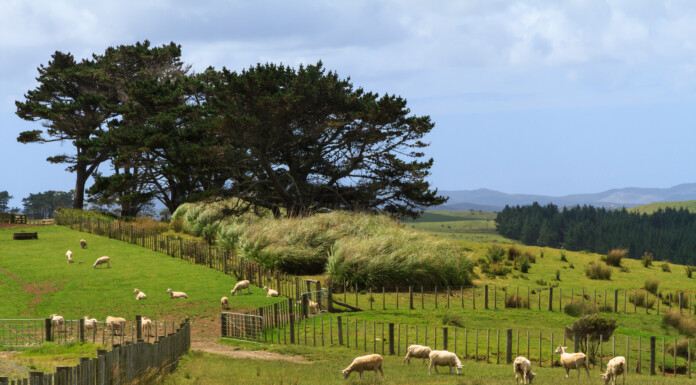Despite comments to the contrary, it’s not all doom and gloom in the forestry sector, according to local forest manager Guy Farman.
The issue is that if you have pruned trees, you’re fine. If you haven’t cared for your trees, you aren’t.
Interestingly though, unloved Macrocarpa trees are currently in hot demand in China. Even old shelter belts of Macrocarpa are achieving good returns for farmers. The timber is used to make coffins, and this market is growing.
Farman points out that there are currently excellent returns for pruned logs. A fact I hadn’t realised is that pines are one of only a few species that can be pruned to produce clear wood without seriously impacting on the tree’s growth.
He said that the demand was still good in the United States and Europe for clear wood.
“In the past, foresters needed a $50 premium to justify the pruning costs. Currently, that differential is between $60 and $70.
“While a pruned log is only 25 per cent of a forest it provides 50 per cent of the value of that forest.
“Currently, the demand for lumber is being driven by the international market along with a current lack of supply.
“There were 7000 hectares of forests blown over during Cyclone Gabrielle. Now there’s a real shortage of pruned logs locally,” he said.
Doing further research, Farman is right on the button when it comes to pruned logs as the industry believes the international market for them is ‘the best it’s ever been’.
Currently, the price of pruned logs is $200 a tonne. Some foresters are getting over that figure.
Conversely, unpruned logs are sitting at the early $100’s. Pruning makes good financial sense.
There’s an additional bonus for New Zealand with pruned logs in that the value added happens here.
The issue for local sheep and beef farmers is that if you plant pines today, the returns are a good 25 years away. Pruning is expensive, but the returns justify that expense.
The problem is compounded by the current economic plight of the local sheep and beef industry. There’s no fat anywhere.
The lesson for farmers considering forestry is only to plant the area they can afford to prune. It’s better to plant less to receive more.
The other option farmers can consider is to plant trees for carbon production and not worry about any silviculture. ‘Experts’ are promising the price of carbon will increase from the current $46 a tonne and I believe it will.
The price of carbon has varied from around $40 to almost $80 over the last twelve months, but there is still a good return at $46. One that is infinitely better than that for sheep and beef.
The other option is to plant for harvest, prune and claim carbon along the way.
That would be my preferred position.
Alan Emerson is a semi-retired writer, farmer and businessman living in Wairarapa. He writes a weekly column for Farmers Weekly and has written and/or edited five books.



I hope the greens 😩 and climate change people 🙄 don’t read this. Our carbon footprint will increase. WHAT A JOKE KEEP THE WORK AND MONEY 💰 COMING.